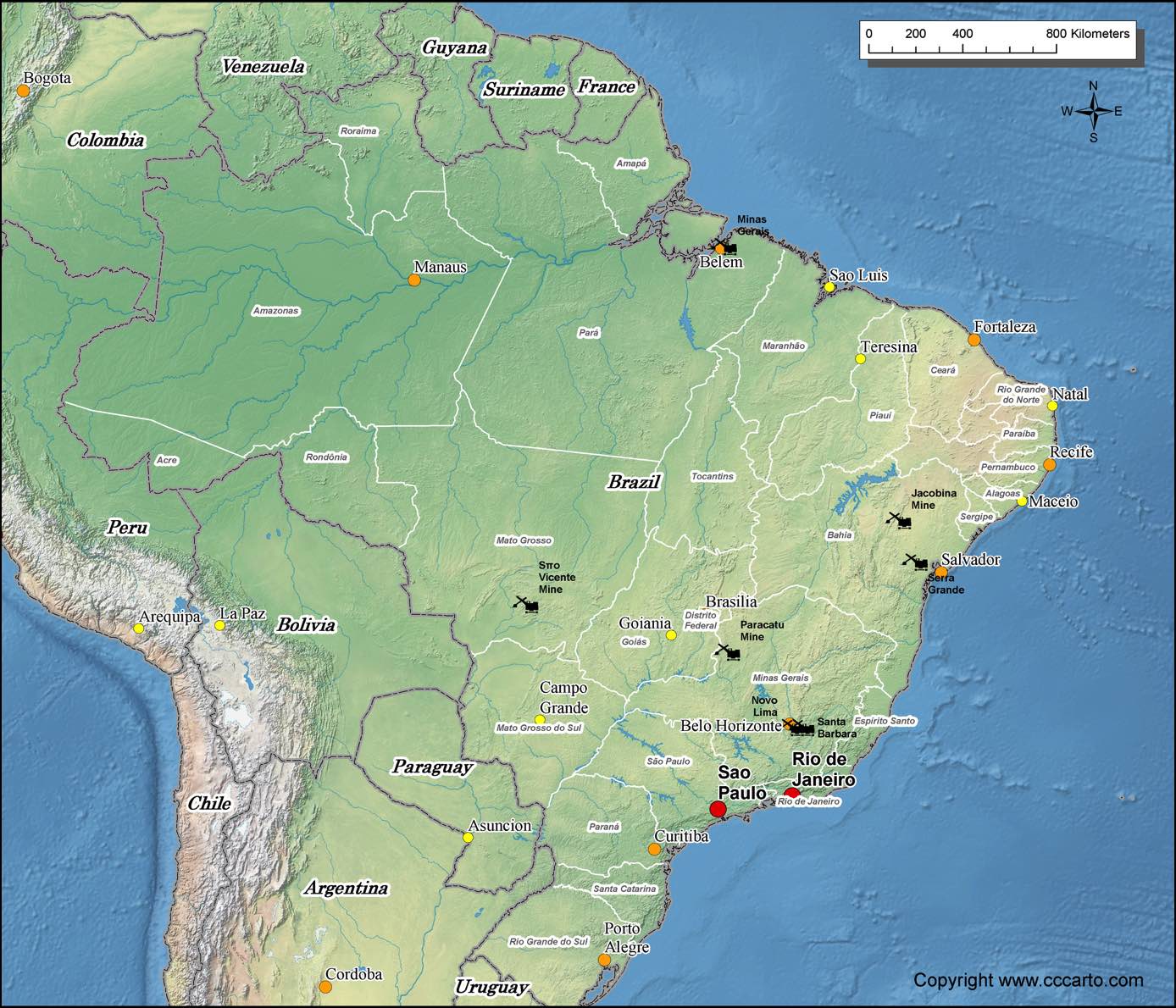
Brazil Goldmines
Initially, individual miners, known as garimpeiros, were primarily responsible for the extraction of gold. They employed rudimentary methods such as panning, sluicing, and using rocker boxes to separate gold from river sediments and ore. As gold mining expanded, larger operations and mining corporations began to dominate the industry. Portuguese colonial authorities and later Brazilian governments regulated and taxed the mining activities.
The most productive gold mining areas in Brazil historically include:
1. Minas Gerais: Known for its extensive gold deposits, including both placer gold (nuggets and flakes found in river sediments) and primary gold deposits embedded in quartz veins.
2. Pará and Amazonas: These regions also saw significant gold mining activity, often involving more challenging conditions due to the dense rainforest.
Major gold mines in Brazil include:
• Morro Velho Mine: One of the oldest and deepest mines in Brazil, known for its underground mining operations targeting deep rock gold deposits.
• Cuiabá Mine: Located in Minas Gerais, known for its placer gold deposits and alluvial mining operations.
• Serra Grande Mine: Operates as a modern open pit mine extracting both gold and copper.
Successful mining techniques in Brazil have varied over time. Initially, alluvial mining methods like panning and sluicing were prevalent in the rivers of Minas Gerais. As mining evolved, deeper rock deposits were exploited using techniques such as hydraulic mining, dredging, and later, cyanide leaching processes for extracting gold from low-grade ores.
Famous and rich gold strikes in Brazil include the discoveries in the Morro Velho and Gongo Soco mines, which yielded substantial amounts of gold during the 18th and 19th centuries.
Cities such as Ouro Preto, Mariana, and Paracatu were established and flourished due to their proximity to rich gold deposits.
Gold mined in Brazil is typically sold through official channels and can end up in various global markets, including jewelry manufacturers, investment products, and industrial uses.
Today, gold miners in Brazil can earn varying incomes depending on their role and the scale of the operation. Working conditions and environmental regulations have improved, although challenges remain, particularly in informal mining sectors where safety and environmental practices may lag.
Historically, Brazil has minted various gold coins, including the Portuguese-Brazilian cruzado, milréis, and modern commemorative coins.
Environmental costs of gold mining in Brazil have been significant, particularly in the Amazon region where deforestation and mercury pollution from artisanal mining have posed serious ecological challenges.
Several gold mines in Brazil have closed over the years due to economic factors or exhaustion of accessible reserves. Active mines like Cuiabá and Serra Grande continue to produce gold, contributing to Brazil's mineral wealth and economy.
Source: U.S. Geological Survey, Major mineral deposits of the world, Open-File Report 2005-1294. Data portal